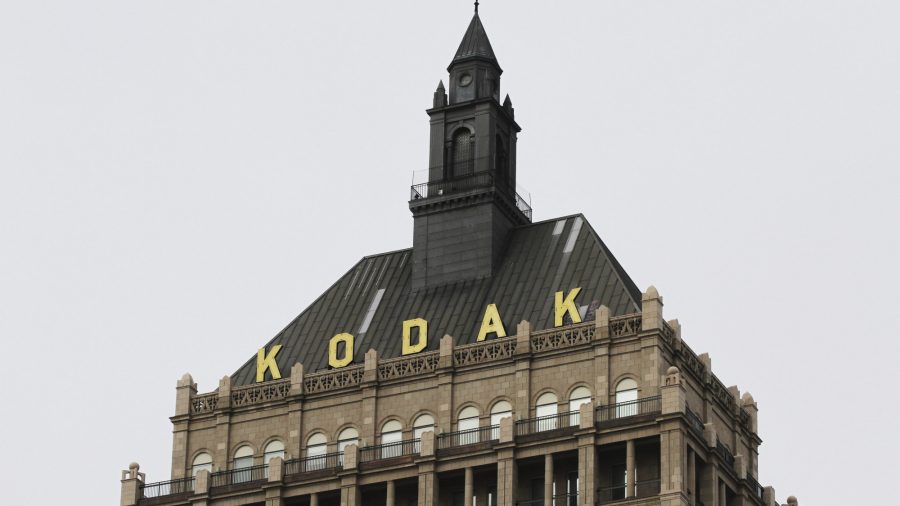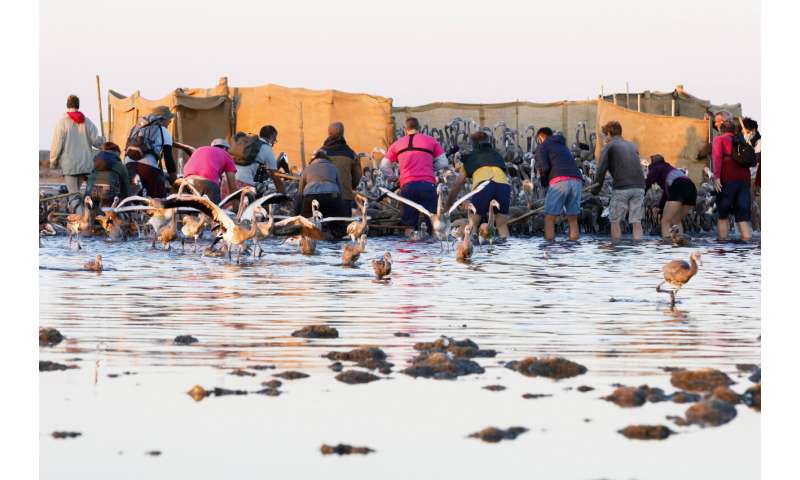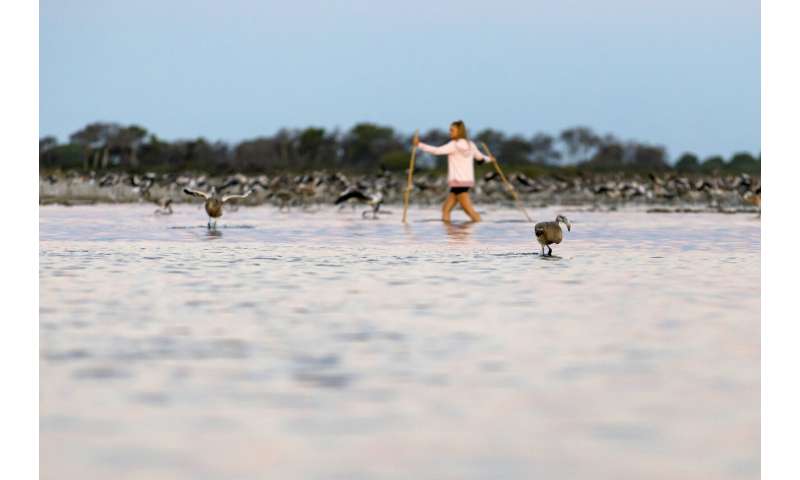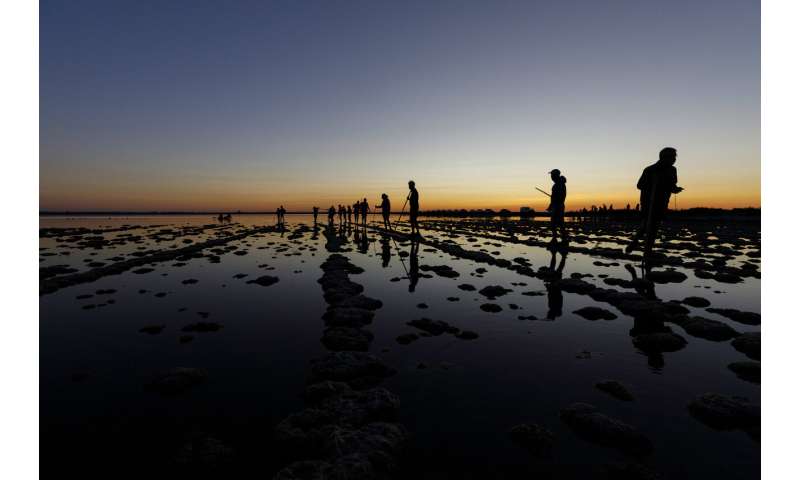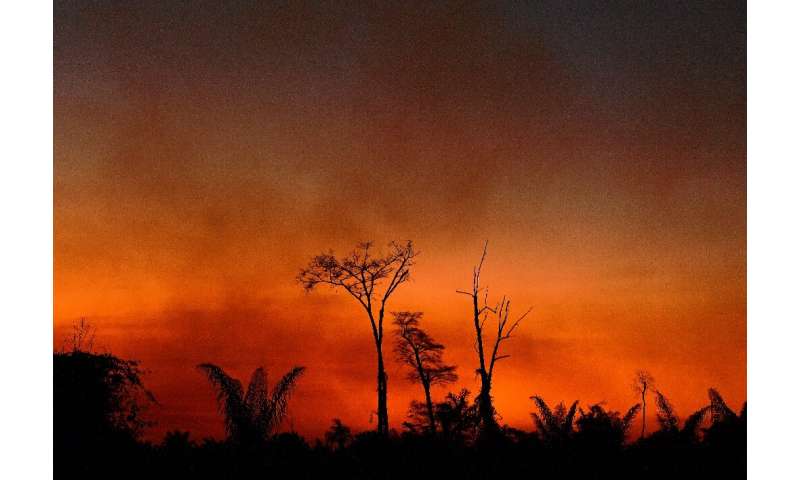25-mile-deep reservoir of salty water found beneath surface of Ceres
By Nick Lavars August 10, 2020

A mosaic image using false color to highlight the exposed brine on the surface of Ceres
NASA/JPL-Caltech/UCLA/MPS/DLR/IDA/USRA/LPI
Through its 11-year stint studying the asteroid belt between Mars and Jupiter, NASA’s Dawn mission has profoundly changed our understanding of the dwarf planet Ceres. New analysis of data collected during the latter stages of this mission has offered some compelling answers to long-standing questions about the makeup of Ceres, starting with presence of a 25-mile-deep reservoir of brine beneath the surface.
Over the past few years as data from the Dawn mission continued to roll in, scientists have been piecing together a puzzle of peculiar geological activity on Ceres. The nature of unusually bright spots that feature in its Occator Crater posed a mystery, with scientists working to understand how they are formed and what they might represent.
Evidence had suggested that these deposits are formed by salty liquid bubbling up to the surface to leave the highly reflective deposits on the crust, but where could such a liquid come from? While an underwater reservoir of brine was seen as a strong possibility, the discovery of new evidence has now led scientists to conclude not only that this is indeed the case, but that ongoing geological activity is keeping these salty surface features fresh and shining brightly.
The environment of Ceres’ surface is one where salts holding water would be expected to dehydrate in just a matter of centuries. But the team found salt compounds concentrated in one of the better-known bright spots, called Cerealia Facula, that were still carrying water, suggesting that they must have made their way to the surface only recently. According to principal investigator for the Dawn mission, Carola Raymond, the pathways for this process could be traced back to the crater impact millions of years ago.
"For the large deposit at Cerealia Facula, the bulk of the salts were supplied from a slushy area just beneath the surface that was melted by the heat of the impact that formed the crater about 20 million years ago," she explains."The impact heat subsided after a few million years; however, the impact also created large fractures that could reach the deep, long-lived reservoir, allowing brine to continue percolating to the surface."
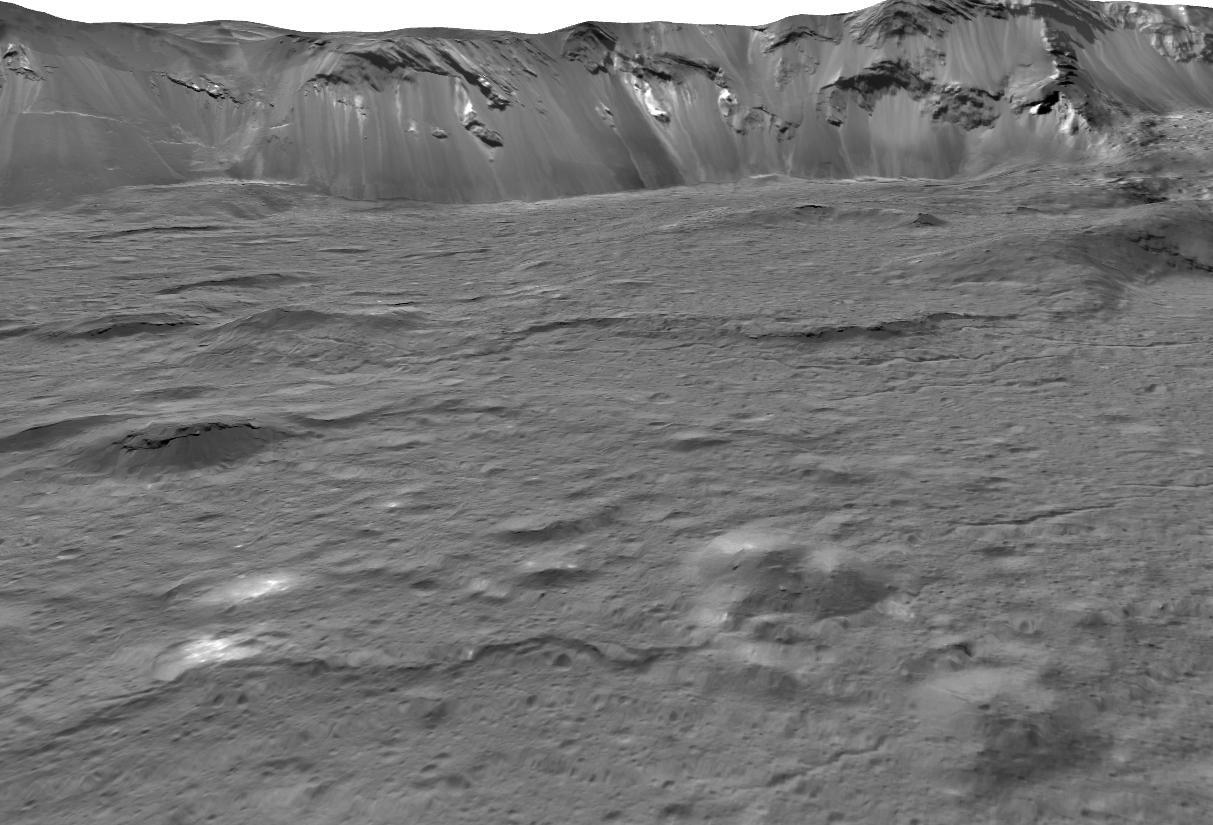
A mosaic of the Occator Crater, on the surface of dwarf planet Ceres
NASA/JPL-Caltech/UCLA/MPS/DLR/IDA/USRA/LPI
Adding further support to the idea of liquids on Ceres was the discovery of small hills resembling pingos here on Earth, which are small icy mountains found in the polar regions that are created by pressurized groundwater. These had been seen on Mars before but never on a dwarf planet.
The team also carried out new gravity measurements of Ceres using the latest data from Dawn, revealing that the brine reservoir is around 25 miles (40 km) deep, and hundreds of miles wide. These gravity measurements also offered new insights into the dwarf planet’s interior, finding that its crustal density increases with depth. This increase in density is much greater than could be explained by pressure alone, so the team believes that it is the result of the underground reservoir incorporating salt and mud into the lower crust as it freezes.
"Dawn accomplished far more than we hoped when it embarked on its extraordinary extraterrestrial expedition," says Mission Director Marc Rayman of NASA's Jet Propulsion Laboratory in Southern California. "These exciting new discoveries from the end of its long and productive mission are a wonderful tribute to this remarkable interplanetary explorer."
Three papers describing the discoveries were published in the journals Nature Communications, Nature Geoscience and Nature Astronomy.
Source: NASA
Nick Lavars
Nick has been writing and editing at New Atlas for over six years, where he has covered everything from distant space probes to self-driving cars to oddball animal science. He previously spent time at The Conversation, Mashable and The Santiago Times, earning a Masters degree in communications from Melbourne’s RMIT University along the way.
Planetary science: Dawn’s close-up look at Ceres
Nature Astronomy
August 11, 2020
Observations from the second extended Dawn mission to Ceres are presented in a suite of seven papers published this week in Nature Astronomy, Nature Geoscience and Nature Communications. The findings suggest that Ceres is an ocean world and may have been geologically active in the recent past, shedding further light on the history and formation of the dwarf planet.
The Dawn spacecraft orbited Ceres — a dwarf planet and the largest known asteroid-belt object — from 2015 to 2018, before it ran out of fuel. In its final phase, the Dawn spacecraft orbited just 35 km above the surface of Ceres. It focused on the 20-million-year-old Occator crater, which had been shown earlier in the mission to exhibit bright deposits from brines coming from the interior.
In a Nature Astronomy paper, Carol Raymond and colleagues analysed high-resolution gravity data and imaging from Dawn and found that there is an extensive brine reservoir deep beneath the Occator crater. They suggest that the reservoir could have been mobilized by the impact that created the crater, which contributed to the formation of bright salt deposits on the planet’s surface. In another paper, Maria Cristina De Sanctis and colleagues report the presence of hydrated chloride salts at the centre of Cerealia Facula, the biggest bright area in the center of Occator crater. As these salts dehydrate very quickly, the authors suggest that the brines may still be ascending, indicating that salty fluids could still exist in the interior of the dwarf planet. In separate papers, Ryan Park and colleagues explore the make-up of Ceres’s crust, while Andreas Nathues and colleagues suggest that Ceres underwent a period of cryovolcanic activity starting around nine million years ago, and persisted until very recently.
Writing in Nature Geoscience, Britney Schmidt and colleagues show that the mounds and hills in the Occator crater may have formed when impact-induced water flows froze. This suggests that cryo-hydrologic processes extend beyond Earth and Mars, and were active on Ceres in the geologically recent past.
In two separate papers published in Nature Communications, Paul Schenk and colleagues suggest that water- and salt-rich mud-like impact melts are distinct from, and less expansive than, those on Mars, and Jennifer Scully and colleagues show that the various bright deposits in the Occator crater may have had different sources.
Upon publication, the papers, together with accompanying comments, will be collated at the following URL: https://www.nature.com/natastron/collections/dawnxm2
doi:10.1038/s41550-020-1168-2

